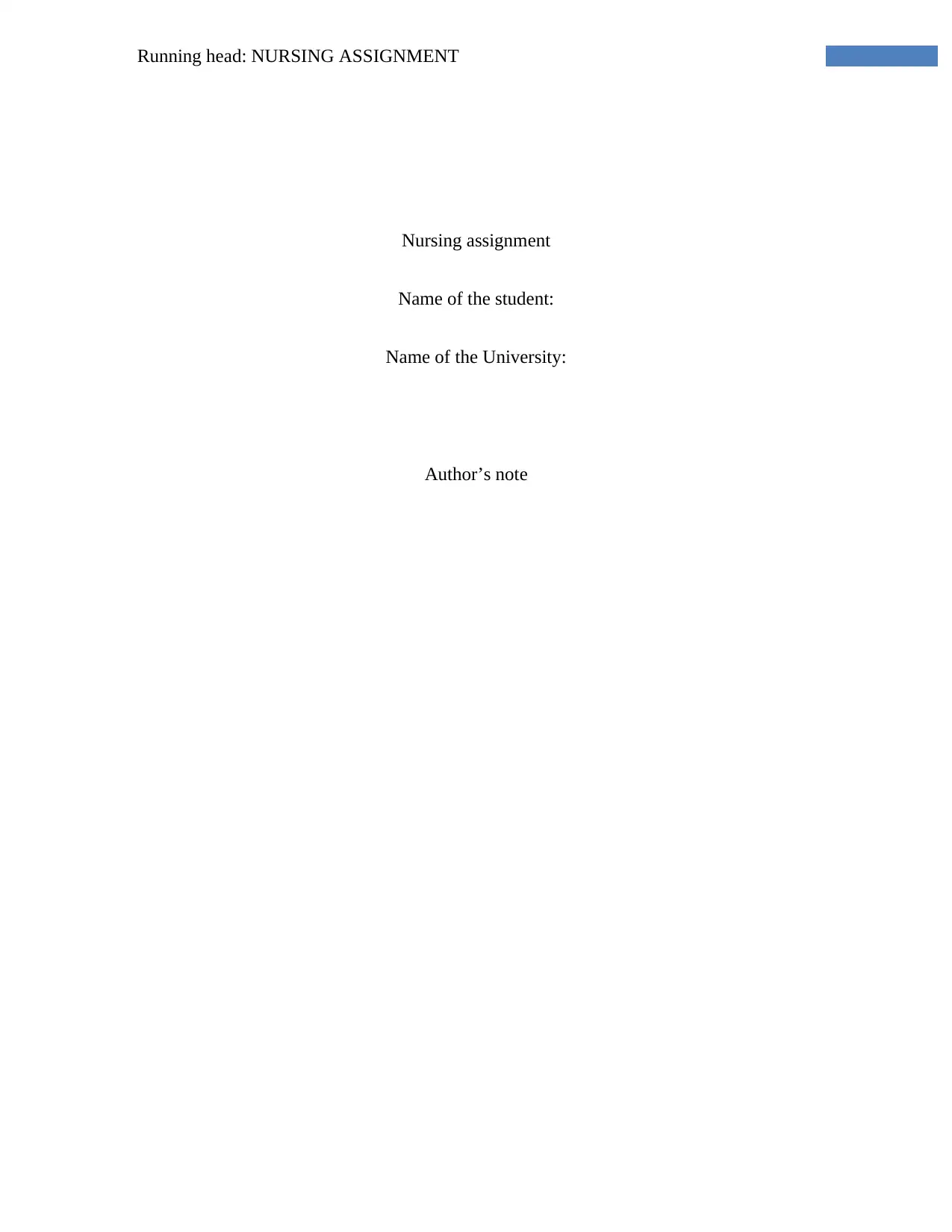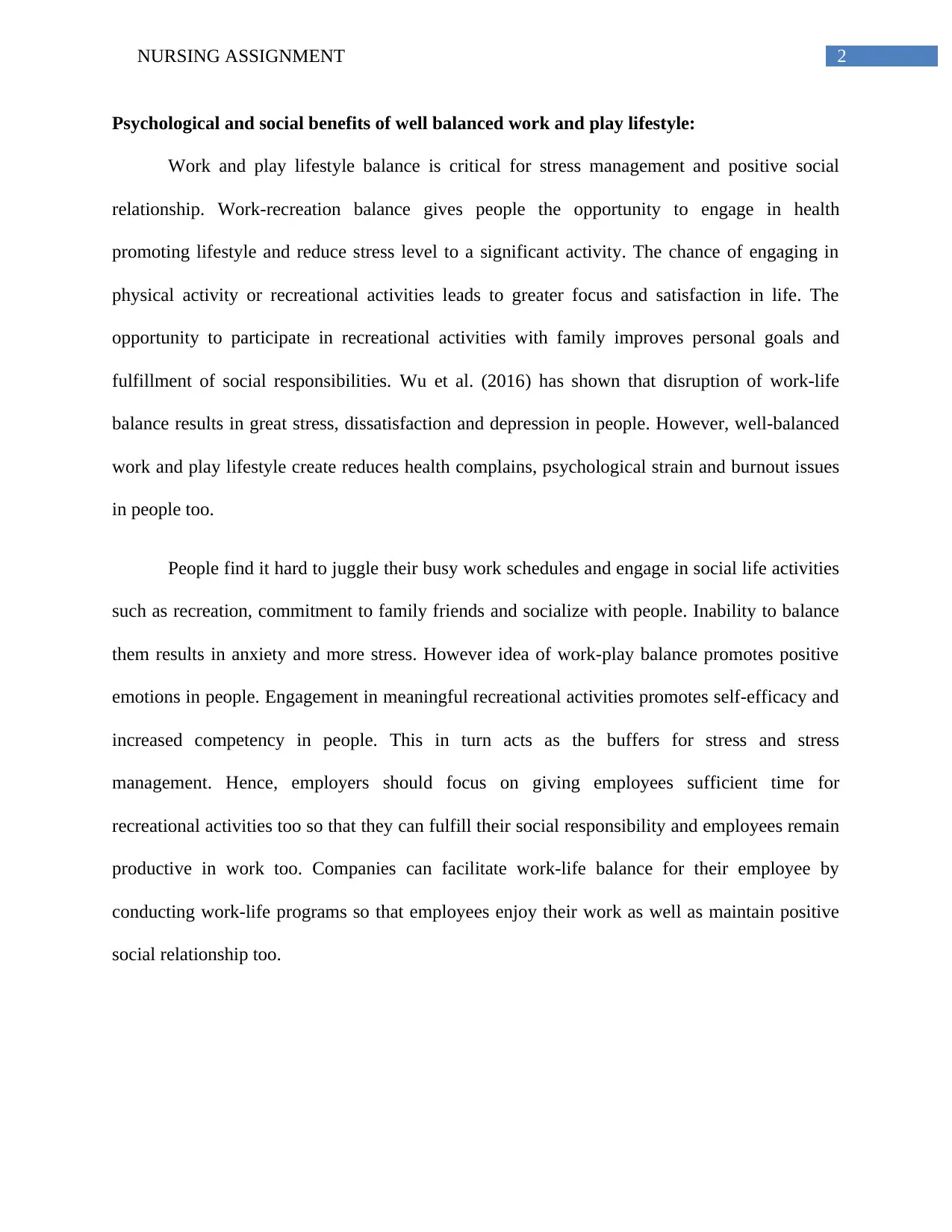Nursing Assignment: Analyzing Watson's and King's Nursing Models
VerifiedAdded on 2020/04/13
|4
|775
|1119
Homework Assignment
AI Summary
This nursing assignment examines two key nursing models: Jean Watson's theory of caring and Imogene King's theory of goal attainment, evaluating their strengths and weaknesses in practical application. Watson's theory emphasizes holistic care, while King's focuses on interpersonal relationships and goal achievement. The assignment also explores the psychological and social benefits of a balanced work and play lifestyle, highlighting its importance for stress management and positive social relationships. It references relevant research to support the arguments, emphasizing the need for employers to facilitate work-life balance for their employees to improve both personal well-being and professional productivity. The assignment concludes by providing a comprehensive analysis of the topics covered.
1 out of 4











![[object Object]](/_next/static/media/star-bottom.7253800d.svg)